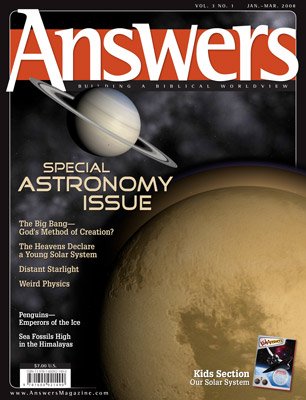Dinosaur Killer
Did the catastrophic impact of a large comet or asteroid caused the extinction of dinosaurs?
The idea has been ingrained in our consciousness that dinosaurs died out because a large asteroid or comet hit the earth some 65 million years ago. So it may be a surprise to realize how recent this theory is.
Over the years dozens of theories have been proposed. When I was in school many years ago, I was taught that the shells of dinosaur eggs were becoming too thin, so they were not hatching properly. The teacher never explained why this happened only to dinosaur eggs while birds’ eggs or other reptile eggs did just fine, but many people believed the theory.
K-T Boundary
The impact theory first gained popularity in the 1980s. It was formulated as a result of new studies of the so-called “K-T extinction event.”
Whenever a number of organisms appear to be missing in a layer of rocks above another layer where they are found, evolutionary geologists call this an extinction event.
To understand this theory, you need to understand the term extinction event. Whenever a number of organisms appear to be missing in a layer of rocks above another layer where they are found, evolutionary geologists call this an extinction event.
The most well-known extinction event is at the boundary between Cretaceous and Tertiary rocks. (Cretaceous rocks are indicated by a K to distinguish them from Cambrian rocks, which have a C abbreviation.) This boundary occurred 65 million years ago on the evolutionary time-scale, and dinosaurs appear only at the bottom on the Cretaceous side. Other animal species are not found above this boundary, including many marine reptiles and plants.
The father and son team of Luis and Walter Alvarez discovered that rocks from the K-T boundary have an unexpectedly high concentration of iridium. They assumed that this could not have come from earth because they assumed the earth was originally molten and any iridium would have sunk to the core after millions of years. The Alvarez team therefore suggested that this iridium came from a colliding asteroid.
In 1990, the supposed “smoking gun” of the impact theory was found. Formations at Chicxulub, Mexico, appeared to be the remnants of a very large impact crater.
Such a huge impact would have sent a large dust cloud into the atmosphere, blocking sunlight from the earth and causing some species to die out. In some variants of the theory, a comet rather than an asteroid caused the deadly impact.
But the theory has some problems. For example, some extremely light-sensitive species in the ocean did survive. Another problem is that the cloud would cause a long period of extreme cold, somewhat like the so-called “nuclear winter” that might follow the dropping of nuclear weapons.
A third problem is that there is too much iridium to fit with the theory. Although asteroids do have iridium in them, they do not normally spread out the iridium upon impact. (In other words, areas around impacts are not iridium-enriched.) In at least one case, the iridium would have taken half a million years to cover the earth, by evolutionary counting.
Far more likely is that the iridium enrichment came from volcanic activity, not outer space. Volcanoes do produce iridium and spread it out.
As a result of these and other problems, some evolutionary scientists do not accept the impact theory.

Geologic Table: The geologic table summarizes the earth’s rock layers. According to secular scientists, they record millions of years of history, but the Bible indicates that the layers were laid over the past 6,000 years.
The K-T Boundary: This visible boundary between two layers of strata (Cretaceous and Tertiary) is thought to be the result of a mass extinction.
Other Theories
If the impact theory is not correct, then how is the disappearance of dinosaurs to be explained? Some scientists have suggested that the world’s climate suddenly became too cold. Others have suggested that their numbers declined as dinosaurs ate each other. A few theories have been wacky, such as the suggestion that dinosaurs died out from a plague of indigestion.
There is another possibility, ignored in secular science journals. While the impact theory admits the possibility of a global catastrophe resulting from an asteroid or comet, the Bible describes a very different global catastrophe that could have caused the “K-T extinction event”—the worldwide Flood of Genesis 6–9.
The Bible says that “all fountains of the great deep were broken up” (Genesis 7:11). The breakup of the earth’s crust would certainly have caused volcanoes on an unprecedented scale during the Flood, explaining the iridium in the K-T boundary. The bulk of the world’s fossils would have formed as a result of this catastrophe.
While pairs of every kind of dinosaur survived the Flood on board the Ark, it appears that their population never grew large in the new world. Like so many other kinds of animals, their small populations finally went extinct for a variety of reasons typical of many animals, including climate changes, diseases, decrease in food supply, and humans.
Starting with the Bible, it is easy to make sense of the mass kill of dinosaurs found in the fossil record.
Answers Magazine
January – March 2008
This collector’s quality issue is a special, extended 112-page issue about astronomy, covering the big bang, black holes, space exploration, and much more!
Browse IssueRecommended Resources

Answers in Genesis is an apologetics ministry, dedicated to helping Christians defend their faith and proclaim the good news of Jesus Christ.
- Customer Service 800.778.3390
- Available Monday–Friday | 9 AM–5 PM ET
- © 2025 Answers in Genesis






